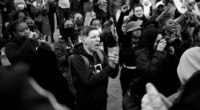Diverse groups in problem solving benefit from miscommunication, provided that the organizational structure is appropriate. A recent study found that diverse groups explore more options, increasing the likelihood of bigger successes in problem solving, while high-ability groups tend to explore the same solutions. Miscommunication creates diversity by presenting opportunities for people to explore the available search space better when actively engaged in problem-solving. However, the study highlights the need to organize groups effectively to ensure that miscommunication enhances diversity and group performance. Institutional arrangements play a crucial role in identifying ways that certain institutions are better at handling mistakes. By examining the different ways groups can work together and how miscommunication can make errors worse or diminish their harm, the study provides insights for small neighborhood civic organizations to large corporations requiring intragroup problem-solving cooperation.
“Failure to Communicate” Can Aid Diversity in Problem Solving, Study Shows
A recent study suggests that groups lacking diversity can benefit from miscommunication during problem solving. The research team found that the degree to which miscommunication helps or hinders the search for a solution is strongly based on factors such as team dynamics. Ryan Muldoon, an associate professor of philosophy at the UB College of Arts and Sciences, co-authored the paper with Keith Hankins and Alexander Schaefer.
The paper builds upon a popular problem-solving model, claiming that miscommunication creates diversity by presenting opportunities for people to better explore the available search space when actively engaged in problem solving. However, the internal structure of the team plays a crucial role in introducing miscommunication.
Muldoon suggests that how we organize ourselves when miscommunication occurs matters more than the error itself. Communication is crucial in group work, but sometimes miscommunication occurs due to group diversity. Therefore, it is important to consider team dynamics when introducing diversity to a group to ensure that miscommunication aids rather than hinders problem solving.
New Research Finds Miscommunication Can Enhance Diversity and Group Performance
A recent study, published in PLOS ONE, has shown that group diversity, when combined with miscommunication, can actually enhance problem-solving performance. The study builds on the Hong-Page model of diversity, which suggests that diverse groups have a higher chance of success in problem solving. However, it also found that miscommunication within diverse groups could be a potential cause of misunderstandings, limiting the benefits of group diversity.
To address this, the research team developed a new computational model that introduced various ways in which people might misunderstand one another. The study examined different ways that groups can work together and how miscommunication can make errors worse or diminish their harm. The study suggests that organizational structure is essential in ensuring that miscommunication enhances group performance.
The Hong-Page model found that high-ability groups tend to explore the same solutions to a problem, while diverse groups explore more options, increasing the likelihood of bigger successes. Miscommunication creates diversity by presenting opportunities for people to explore the available search space better when actively engaged in problem-solving. However, it is crucial to organize groups effectively to ensure that miscommunication does not hinder the benefits of group diversity.
Ryan Muldoon, an associate professor of philosophy at the University at Buffalo, explained that the research team’s additional structure allowed them to examine how to maximize diversity’s potential across different structures of cooperation, an area left unexplored by the Hong-Page model. The study highlights that miscommunication can enhance diversity and group performance if properly managed within the group’s organizational structure.
Organizational Structure is Critical for Effective Problem-Solving
The study used a model of nine agents working together to solve a problem of reaching a specific goal over rugged terrain. The different methods of interaction are designed to capture different institutional arrangements that facilitate cooperation. The researchers found that specific ways of organization are critical for effective problem-solving. The study suggests that firms and science labs can benefit from organizing teams effectively. Ryan Muldoon, associate professor of philosophy at the University at Buffalo, explains that understanding institutional arrangements can help in identifying ways that certain institutions are better at handling mistakes.
Don’t miss interesting posts on Famousbio









